What is Scarcity in Marketing?
Scarcity in marketing leverages several psychological principles to create a sense of urgency and increase the perceived value of a product or service.
The ideas in this articles helps web app, webinar, product launches and e-commerce marketers, get a taste of what is possible by way of scarcity in marketing across multiple media formats.
Here are the key principles:
- Perceived Value: When something is scarce, people often perceive it as more valuable because it becomes associated with rarity and exclusivity.
- Fear of Loss (Loss Aversion): The idea of missing out on something desirable can create a fear of loss, prompting individuals to act quickly to obtain the scarce resource or opportunity.
- Social Proof: The fact that something is scarce can serve as social proof of its desirability, reinforcing the idea that it is valuable and worth pursuing.
- Psychological Reactance: The restriction or limitation of a resource can trigger psychological reactance, leading individuals to desire it more as a way to regain their freedom of choice.
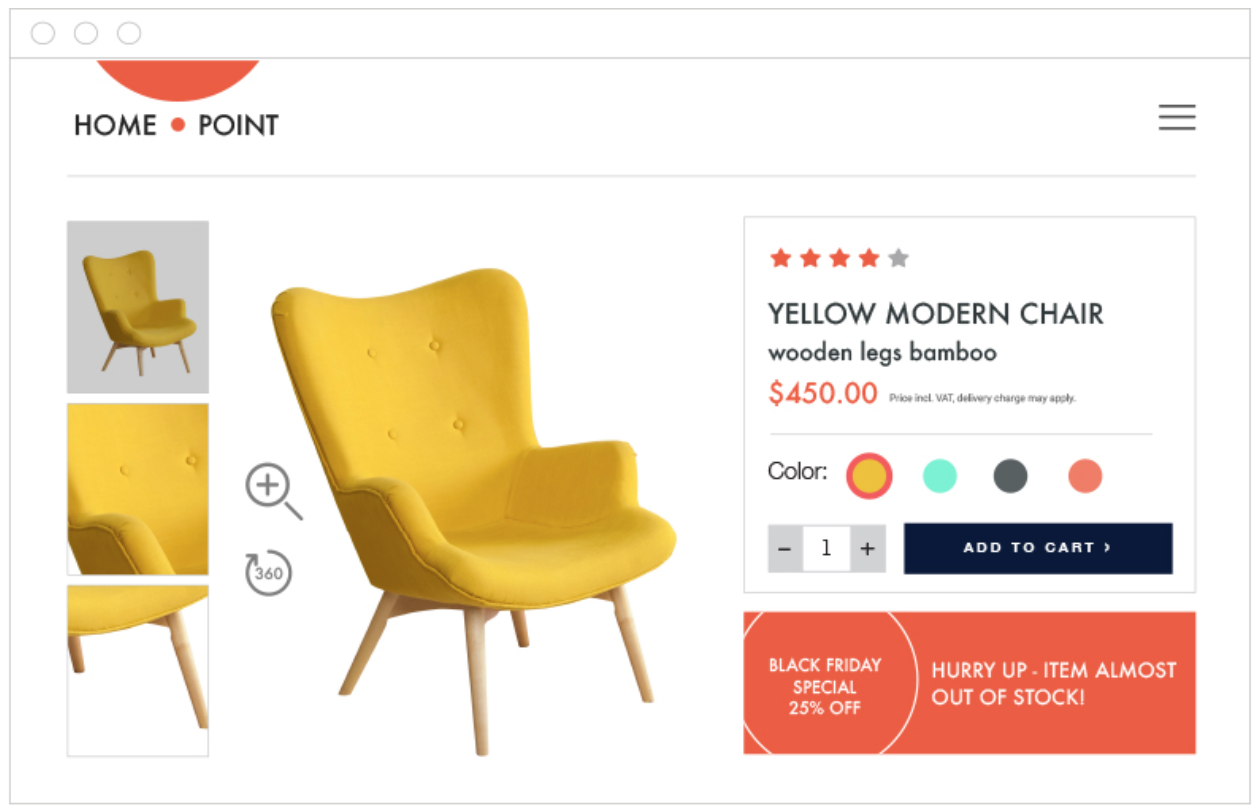
Why use Scarcity?
The primary objective of using scarcity in marketing is to drive consumer behavior by creating a sense of urgency and exclusivity.
This can lead to several outcomes:
- Increased Sales: Scarcity can prompt quicker purchasing decisions, leading to higher sales volumes in a shorter time frame.
- Higher Perceived Value: Products or services that are perceived as scarce are often seen as more valuable, allowing companies to justify higher prices.
- Enhanced Engagement: Scarcity can increase consumer engagement with marketing campaigns, as people are more likely to act quickly to avoid missing out.
- Brand Loyalty: Exclusive offers and limited editions can foster a sense of loyalty among customers who feel they are part of an elite group.
Research That Supports Scarcity
Scarcity marketing is not just a theoretical concept. It has been empirically validated through various studies and statistics.
- Cialdini’s Principles of Persuasion: Robert Cialdini’s work on the principles of persuasion highlights scarcity as a powerful motivator. His studies show that people are more likely to value and desire items that are perceived as scarce.
- Behavioral Economics: Studies in behavioral economics have demonstrated that scarcity can significantly impact consumer behavior, leading to increased demand and higher perceived value.
- Empirical Evidence: Numerous case studies and real-world examples, such as Booking.com’s “only X rooms left” messages and Amazon’s “only X left in stock” notifications, illustrate the practical application and success of scarcity marketing.
Here are some more key findings:
- Increased Purchase Intentions: A meta-analysis of 416 effect sizes from 131 studies found that scarcity marketing significantly boosts purchase intentions. Supply-based scarcity had the most substantial impact, followed by time-based scarcity, while demand-based scarcity had the least effect.
- Higher Willingness to Pay: Research from Indiana University demonstrated that perceived product scarcity makes prices less of a concern for customers. In experiments, students were willing to pay more for scarce goods compared to abundant ones.
- Enhanced Perceived Value: Studies have shown that products perceived as scarce are often rated higher in quality and desirability. For example, participants in a study rated cookies from a jar with only two cookies higher than those from a jar with ten cookies, even though the cookies were identical.
- Boost in Sales: Businesses that effectively use scarcity marketing tactics can see up to 2x higher retention rates and significant increases in sales. For instance, limited-time offers and flash sales have been shown to drive immediate purchases and boost overall sales volume.
- Consumer Behavior: Exposure to scarcity promotions can induce competitive behavior among consumers. A study published in the Journal of Consumer Research found that limited-quantity promotions can lead to aggressive behavior as consumers compete for scarce resources.
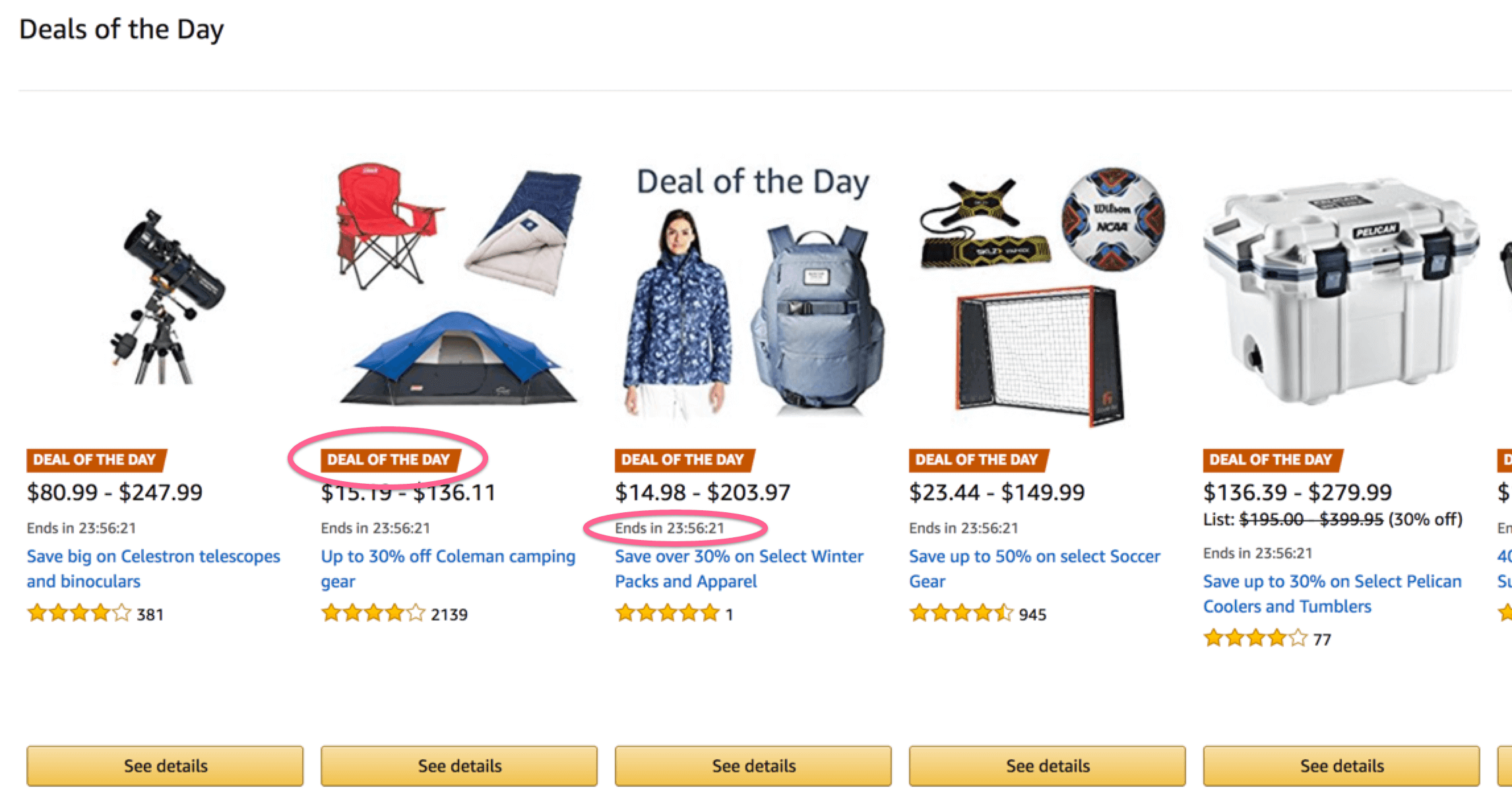
Some Great Examples of Scarcity Tactics Used
LinkedIn Uses It Drive Engagement
- Exclusive Features: LinkedIn offers premium features such as InMail, advanced search filters, and detailed analytics through its paid subscriptions like LinkedIn Premium and Sales Navigator. These features are only available to paying members, creating a sense of exclusivity and scarcity.
- Limited-Time Offers: LinkedIn occasionally provides limited-time discounts on its premium subscriptions, encouraging users to upgrade quickly to take advantage of the deal.
- Connection Limits: LinkedIn imposes daily and weekly limits on connection requests for free accounts, which can be bypassed with premium subscriptions. This scarcity encourages users to upgrade to maintain their networking momentum.
- Invite-Only Features: Some new features or beta programs are initially available only to a select group of users, creating a sense of exclusivity and urgency to be part of the early adopters.
- Content Visibility: LinkedIn uses algorithms to limit the visibility of posts from non-premium users, encouraging them to upgrade to premium accounts for better reach and engagement.
Facebook does the same
- Limited-Time Content: Facebook Stories and Live Videos are available for a limited time, creating urgency for users to engage with the content before it disappears.
- Exclusive Groups: Facebook Groups can be set to private or secret, making them accessible only to invited members. This exclusivity drives engagement as users feel privileged to be part of a select community.
- Event Invitations: Facebook Events often use limited-time offers or early bird tickets to create urgency and drive quick RSVPs and engagement.
- Algorithmic Scarcity: Facebook’s algorithm prioritizes content from friends and family over pages and businesses, making organic reach scarce for brands. This scarcity drives businesses to invest in paid advertising to ensure their content reaches their audience.
- Limited-Time Promotions: Facebook often runs limited-time promotions for its advertising services, encouraging businesses to act quickly to take advantage of special rates or features.
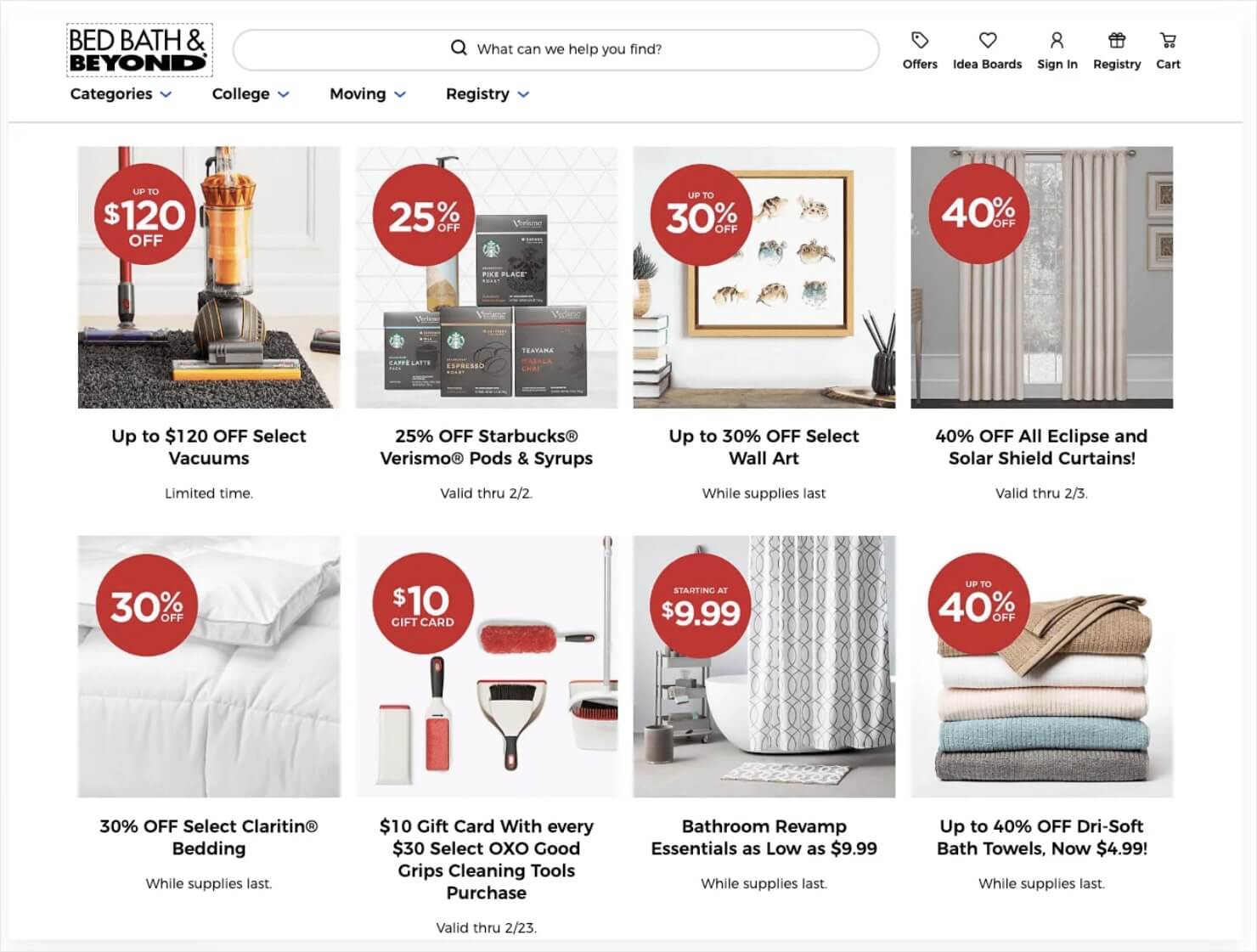
How do E-commerce Companies Use Scarcity?
E-commerce companies frequently use scarcity to drive sales and engagement.
Amazon
Amazon is a master of scarcity marketing, employing several tactics to create urgency and prompt immediate purchases:
- “Only X left in stock” Messages: Amazon frequently displays messages like “Only 2 left in stock” on product pages to create a sense of urgency and push customers to buy quickly.
- Countdown Timers for Lightning Deals: Amazon uses countdown timers for its Lightning Deals, which are time-limited offers that create a sense of urgency. These timers show how much time is left for a deal, encouraging quick decision-making.
- Limited-Time Offers: Amazon’s “Today’s Deals” section features limited-time offers that highlight the savings and the limited availability of products, further driving urgency.
Booking.com
Booking.com effectively uses scarcity to encourage quick bookings and enhance user engagement:
- “Only 2 Rooms Left” Messages: Booking.com displays messages like “Only 2 rooms left at this price” to create a sense of urgency and prompt immediate bookings.
- High Demand Alerts: Notifications such as “Booked 5 times in the last 24 hours” increase the perceived value and urgency, making users feel they need to act quickly to secure a room.
- Real-Time Updates: Booking.com provides real-time updates on how many people are viewing a particular property, creating a competitive environment and encouraging faster decision-making.

Nike
Nike leverages scarcity to create hype and urgency around its product releases:
- Limited-Edition Product Drops: Nike frequently releases limited-edition sneakers and apparel, creating a sense of exclusivity and urgency. These drops are often highly anticipated and sell out quickly, driving significant traffic and sales.
- Exclusive Access for Members: Nike offers early access to new releases for its members, creating a sense of exclusivity and encouraging users to join their membership program.
Groupon
Groupon uses scarcity to drive quick decision-making and purchases through its platform:
- Limited-Time Offers: Groupon features deals that are available for a limited time, often with significant discounts. These offers are highlighted with countdown timers to create urgency.
- Daily Deals: Groupon releases at least one local deal every day with a predetermined purchase period, ranging from a few hours to a few days, encouraging users to act quickly to take advantage of the discounts.
eBay
eBay’s auction format naturally creates scarcity and urgency:
- Limited Number of Items: Auctions on eBay often feature a limited number of items, creating a competitive environment where bidders feel the need to act quickly to secure the item.
- Countdown Timers: eBay uses countdown timers to show how much time is left in an auction, increasing the urgency and prompting bidders to place their bids before time runs out.
- Bid Counts: Displaying the number of bids on an item enhances the sense of competition and urgency, encouraging more bids and higher final prices.
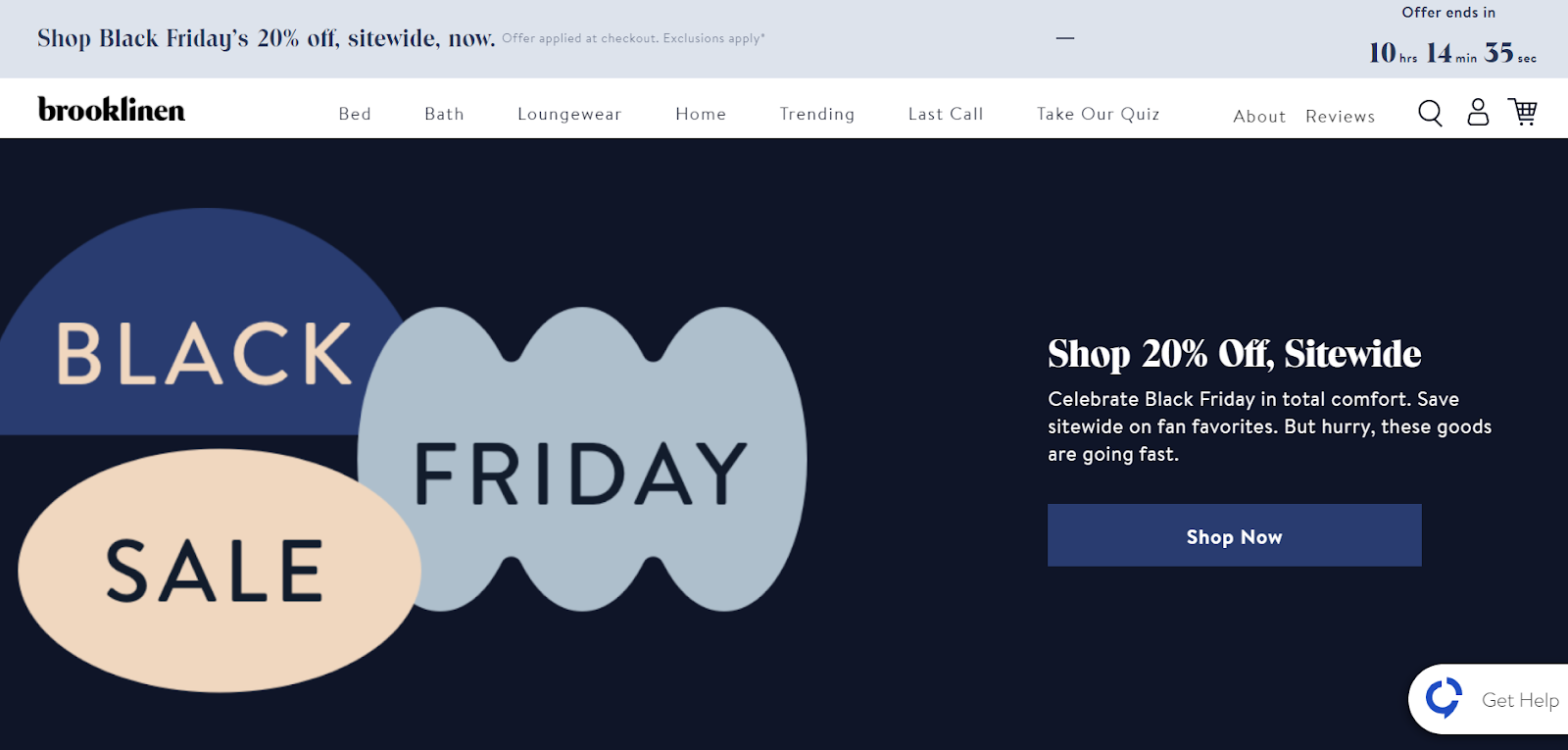
How Do B2B Companies Use Scarcity?
B2B companies also use scarcity to drive engagement and sales. Here are some notable examples:
HubSpot
HubSpot effectively uses scarcity to encourage quick sign-ups and drive engagement:
- Limited-Time Discounts: HubSpot offers significant discounts on their marketing software for a limited time. For example, they provide 50% off for the first year and 25% off ongoing for startups, creating urgency for businesses to sign up quickly.
- Exclusive Offers: HubSpot’s startup program offers exclusive discounts and perks, such as 75% off for the first year for eligible startups, which are only available to those within their partner network. This exclusivity drives urgency and quick decision-making.
Salesforce
Salesforce leverages scarcity in various ways to boost engagement and sales:
- Early-Bird Pricing for Dreamforce: Salesforce offers early-bird pricing for their annual Dreamforce conference, significantly lower than the standard rate. This creates urgency for attendees to register early to secure the discounted rate.
- Exclusive Access to New Features: Salesforce provides exclusive access to new features and early-bird pricing for their events, creating a sense of urgency and exclusivity. For instance, early registrants for Dreamforce get access to special sessions and networking opportunities.
- Limited-Time Offers: Salesforce occasionally runs limited-time promotions for their software and services, encouraging businesses to act quickly to take advantage of the deals.
Alibaba
Alibaba uses scarcity to drive sales and repeat engagement on their platform:
- Flash Sales: Sellers on Alibaba often host flash sales on popular items with a minimum order requirement. This scarcity tactic entices customers to buy quickly to lock in a good deal for their businesses, ensuring they return to the platform regularly.

B2B Events and Conferences
B2B events and conference organizers use scarcity to boost attendance and engagement:
- Early Bird Tickets: Many B2B events offer early bird tickets at a discounted rate, creating urgency for businesses to register early. For example, the Web Summit offers two tickets for the price of one several months before the event, driving early registrations and securing initial funding.
- VIP Passes: Offering VIP passes in limited quantities creates a sense of exclusivity and urgency. These passes often include additional benefits such as exclusive content, networking opportunities, and cost-saving advantages.
Dynamic Pricing
Dynamic pricing is another scarcity tactic used by B2B companies:
- Ticketmaster: Although primarily a B2C example, Ticketmaster’s use of dynamic pricing based on supply and demand can be applied to B2B contexts. This tactic creates urgency and excitement, although it must be used ethically to avoid customer frustration.
Other Campaigns Using Scarcity
Kickstarter Campaigns
Kickstarter campaigns are a prime example of how scarcity can drive engagement and funding:
- Exclusive Features: Many Kickstarter projects offer exclusive features or products that are only available during the crowdfunding window. For example, a tech gadget might offer a special edition color or additional accessories that won’t be available after the campaign ends. This creates a sense of urgency and exclusivity, encouraging backers to pledge quickly.
- Early Bird Rewards: Campaigns often include early bird rewards, which are limited in quantity and available at a lower price. These rewards incentivize early backers to commit quickly to secure the best deal.
- Limited-Time Stretch Goals: Some campaigns introduce stretch goals that are only achievable if a certain funding level is reached within a specific timeframe. This tactic creates urgency and motivates backers to increase their pledges or share the campaign to help reach the goal.
Tesla
Tesla effectively uses scarcity to drive sales and create buzz around its products:
- Limited-Time Offers: Tesla frequently offers limited-time promotions, such as free supercharging for a limited period, to create urgency and drive sales. For instance, buyers who purchase a Tesla vehicle within a specific timeframe might receive free supercharging for a year, encouraging quick decision-making.
- Exclusive Pre-Orders: Tesla often opens pre-orders for new models with a limited number of slots available. This creates a sense of exclusivity and urgency, prompting potential buyers to place their orders quickly to secure their spot.
- Special Editions: Tesla occasionally releases special edition models with unique features or designs that are only available in limited quantities. These editions create a sense of rarity and exclusivity, driving demand among enthusiasts and collectors.
Apple
Apple is renowned for its use of scarcity to generate excitement and drive sales:
- Product Launches: Apple creates massive anticipation and urgency around its product launches by limiting the initial availability of new products. For example, the latest iPhone models are often available in limited quantities at launch, prompting customers to pre-order or line up at stores to secure their devices.
- Limited-Time Promotions: Apple occasionally offers limited-time promotions, such as trade-in deals or discounts on accessories, to create urgency and boost sales during specific periods.
- Exclusive Events: Apple hosts exclusive events, such as the annual Worldwide Developers Conference (WWDC), where attendees get early access to new software and features. This exclusivity drives engagement and creates a sense of urgency among developers and tech enthusiasts.
Disney
Disney uses scarcity to enhance the appeal of its products and experiences:
- Limited Edition Merchandise: Disney frequently releases limited edition merchandise, such as collectible pins, toys, and apparel, that are only available for a short period or in limited quantities. This creates a sense of urgency and exclusivity among fans and collectors.
- Exclusive Experiences: Disney offers exclusive experiences, such as special events, VIP tours, and limited-time attractions, that are only available to a select group of guests. These experiences create a sense of rarity and drive engagement among Disney enthusiasts.
- Vault Strategy: Disney’s “vault” strategy involves periodically releasing classic movies for a limited time before returning them to the vault. This tactic creates urgency among consumers to purchase the movies before they become unavailable again.
These examples illustrate how various companies effectively use scarcity to drive engagement, increase sales, and enhance the perceived value of their products and services.

How is Scarcity Used In Landing Pages
Landing pages are prime real estate for implementing scarcity tactics to boost conversions. Here are some effective methods:
- Scarcity in Headlines: Use scarcity in your landing page headline to grab attention immediately.
For example, “5 Hours Until Your 75% Beard Oil Discount Disappears Forever” creates urgency right from the start.
This tactic ensures that visitors are immediately aware of the limited-time nature of the offer, prompting them to read further and take action quickly.
- Scarcity in Copy: Incorporate phrases like “Only a few hours left,” “X units left,” and “Last chance” to instill a sense of urgency throughout the landing page copy.
This language reinforces the urgency created by the headline and encourages visitors to act fast to avoid missing out.
- Countdown Timers: Visual elements like countdown timers can significantly boost engagement by showing how much time is left for an offer.
For instance, a timer counting down to the end of a sale can prompt immediate action.
Countdown timers are effective because they provide a visual representation of the limited time available, making the urgency more tangible for visitors.
- Limited Quantity Notifications: Display messages such as “Only 2 left in stock” to create urgency and drive quick purchases.
These notifications leverage the fear of missing out (FOMO) by highlighting the scarcity of the product, encouraging visitors to buy before it runs out.
- Dynamic Text Replacement (DTR): Use DTR to create personalized and scarcity-infused landing page copy.
For example, dynamically updating the number of units left or the time remaining based on real-time data can enhance the sense of urgency and personalization.
- Visual Cues: Use visuals that convey scarcity, such as images of empty shelves or limited stock icons.
These visual cues can reinforce the message of scarcity and make it more compelling.
- Urgency-Driven CTAs: Design call-to-action (CTA) buttons that emphasize urgency.
For example, using phrases like “Buy Now Before It’s Gone” or “Claim Your Discount Now” can prompt immediate action.
Pairing these CTAs with contrasting colors can make them stand out and be more effective.
- Limited-Time Offers: Highlight limited-time offers prominently on the landing page.
For example, a banner at the top of the page stating “Flash Sale: 50% Off for the Next 24 Hours” can create a sense of urgency and drive quick conversions.
- Social Proof: Incorporate social proof elements that highlight the popularity and limited availability of the product.
For example, displaying the number of people currently viewing the product or recent purchases can create a sense of urgency and encourage visitors to act quickly.
- Exit-Intent Popups: Use exit-intent popups with countdown timers to capture visitors who are about to leave the page.
These popups can offer a limited-time discount or highlight the scarcity of the product to encourage visitors to stay and complete their purchase.
These strategies illustrate how scarcity can be effectively used on landing pages to boost conversions and drive sales. By creating a sense of urgency and exclusivity, marketers can prompt visitors to take immediate action and increase the overall effectiveness of their campaigns.

Scarcity Usage In Social Media
Social media platforms are excellent for leveraging scarcity to drive engagement and sales.
Here are some effective methods.
Countdowns and Timers: Use countdowns and timers in posts and stories to show how much time is left for a promotion or event. This creates a sense of urgency and encourages quick action. For example, Instagram Stories and Facebook posts can include countdown stickers to highlight the limited time remaining for a sale or event. This visual cue not only grabs attention but also prompts followers to act quickly before the opportunity expires.
Example: Cracku, an online student coaching platform, uses countdown timers in their social media posts to create urgency for their limited-time offers. This tactic has proven effective in driving immediate engagement and conversions.
Exclusive Access: Offer exclusive or early access to products or services for followers, creating a sense of exclusivity and urgency. For instance, announcing a limited number of spots for a webinar or a limited-time discount for followers can make them feel special and prompt quick action.
Example: Nike frequently uses social media to announce exclusive early access to new product releases for their followers. This strategy not only creates a sense of exclusivity but also drives significant engagement and sales as followers rush to secure their spot.
Limited-Time Content: Utilize ephemeral content like Instagram Stories or Facebook Live videos that disappear after a certain period, encouraging immediate engagement. This type of content leverages the fear of missing out (FOMO) to drive quick interactions and views.
Example: Starbucks effectively used Instagram Stories to promote their limited-time Unicorn Frappuccino. The ephemeral nature of the content created a buzz and urgency, leading to a surge in orders and social media engagement.
Hashtags and Challenges: Create buzz and a sense of community by using hashtags, challenges, or contests that are available for a limited time. This not only drives engagement but also encourages user-generated content and participation.
Example: Coca-Cola’s “Share a Coke” campaign used limited-time hashtags and challenges to encourage users to share photos of their personalized Coke bottles. This campaign created a sense of urgency and community, driving significant social media engagement and brand loyalty.
Ephemeral Content Strategies: Ephemeral content, such as Snapchat and Instagram Stories, can be used to share time-sensitive promotions, behind-the-scenes looks, or limited-time offers. This type of content is designed to disappear after 24 hours, creating a sense of urgency and encouraging immediate engagement.
Example: Brands like Sephora use Instagram Stories to share flash sales and limited-time offers. By leveraging the ephemeral nature of Stories, they create a sense of urgency and drive quick purchases.
Interactive Elements: Incorporate interactive elements like polls, quizzes, and countdown stickers in your social media posts to engage followers and create a sense of urgency. These elements can prompt immediate action and increase engagement rates.
Example: Way San Diego used Instagram’s countdown sticker to promote a contest deadline for Barnaby Nutrition and SoCal Resolution Run. This interactive element not only created urgency but also encouraged followers to participate and share the countdown with their own followers.
Scarcity In Email Marketing
Email marketing is a powerful channel for implementing scarcity tactics.
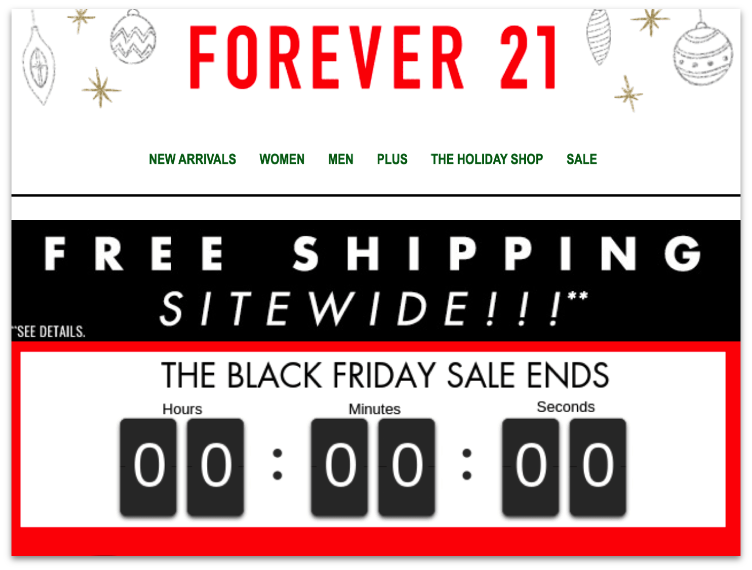
Countdown Timers in Emails: Embed countdown timers in emails to show how much time is left for a deal, creating urgency.
For example, Greetabl uses countdown timers to urge customers to buy now for timely delivery. The visual countdown creates a sense of urgency, prompting recipients to act quickly to take advantage of the offer before it expires.
Example: Chubbies, known for their fun and engaging email campaigns, uses countdown timers to highlight the limited time left for their flash sales. This tactic not only grabs attention but also drives immediate action from their subscribers.
Low Stock Alerts: Use subject lines and email content to notify subscribers of low stock, such as “Only 5 vouchers remaining” or “250 others are checking out this product right now.” These alerts create a sense of urgency and prompt quick purchases to avoid missing out.
Example: The Body Shop sends emails with subject lines like “Hurry, only a few left!” to notify subscribers of low stock on popular items. This strategy effectively drives quick purchases and reduces the likelihood of stockouts.
Limited-Time Offers: Send emails with limited-time offers, emphasizing phrases like “Ends at midnight” or “Last chance to save” to drive quick action. These offers create a sense of urgency and encourage recipients to act fast to take advantage of the deal.
Example: LOOKFANTASTIC uses limited-time offers during peak shopping periods like Black Friday and Cyber Monday. Their emails often feature subject lines such as “6 HOURS LEFT” to emphasize the urgency and drive immediate engagement.
Exclusive Access: Offer early access to sales or new products to email subscribers, creating a sense of exclusivity and urgency. This tactic makes subscribers feel special and valued, prompting them to act quickly to secure their exclusive benefits.
Example: Nike frequently sends emails to their members offering early access to new product releases. This strategy not only creates a sense of exclusivity but also drives significant engagement and sales as subscribers rush to secure their spot.
Back-in-Stock Notifications: Send emails to notify subscribers when a previously sold-out item is back in stock. These notifications create urgency by highlighting the limited availability and encouraging quick purchases before the item sells out again.
Example: Anthropologie uses creative copy and design in their back-in-stock emails to grab attention and drive quick action. Their emails often feature phrases like “Back in Stock. Don’t Wait!” to create a sense of urgency.
Personalized Countdown Timers: Use personalized countdown timers in emails to create a sense of urgency tailored to each recipient. This approach can enhance the effectiveness of the countdown by making it more relevant and engaging.
Example: New Look uses personalized countdown timers in their emails to count down the hours, minutes, and seconds left to use a personalized coupon. This tactic not only creates urgency but also engages recipients on a one-to-one level.
Event-Based Countdown Timers: Use countdown timers to build anticipation for upcoming events, such as webinars, product launches, or special sales events. This tactic creates excitement and urgency, encouraging recipients to register or participate before the event starts.
Example: British Airways uses countdown timers in their emails to count down the days to the end of a sale, emphasizing the limited time people have to make a saving on booking their flights.
Flash Sale Announcements: Send emails announcing flash sales with countdown timers to create a sense of urgency and drive immediate purchases. Flash sales are typically short-term promotions that offer significant discounts, making them highly effective for driving quick action.
Example: Sunski uses countdown timers in their flash sale emails to highlight the limited time left to take advantage of the discounts. This approach creates urgency and encourages recipients to act quickly.
Others: Scarcity in Webinars & Product Launches

Webinars and Online Events
Use scarcity to drive sign-ups for webinars and online events by highlighting limited seats or early-bird pricing. Here are some effective methods and examples:
Limited Seats: Highlight the limited number of seats available for a webinar to create urgency. This tactic makes potential attendees feel they need to act quickly to secure their spot.
Example: Instapage uses countdown timers on their webinar landing pages to create urgency. By showing how much time is left to register, they encourage quick sign-ups. The timer is prominently displayed, making it clear that the opportunity is fleeting.
Early-Bird Pricing: Offer discounted pricing for early registrants to incentivize quick sign-ups. This not only drives early engagement but also helps in planning and logistics.
Example: Web Summit offers early bird tickets at a significantly reduced rate compared to regular pricing. This strategy creates urgency and drives early registrations, ensuring a good turnout and initial funding for the event.
Exclusive Content: Promote exclusive content or special sessions available only to early registrants or a limited number of attendees. This creates a sense of exclusivity and urgency.
Example: Salesforce’s Dreamforce conference offers exclusive access to new features and special sessions for early registrants. This not only creates urgency but also enhances the perceived value of attending the event.
Countdown Timers: Use countdown timers on landing pages and in promotional emails to highlight the limited time left to register. This visual cue reinforces the urgency and prompts immediate action.
Example: British Airways uses countdown timers in their emails to count down the days to the end of a sale, emphasizing the limited time people have to make a saving on booking their flights.
Product Launches
Create buzz around new product launches by offering limited quantities or exclusive pre-launch access. Here are some effective methods and examples:
Limited Quantities: Announce that only a limited number of units will be available at launch. This creates a sense of exclusivity and urgency, driving quick sales.
Example: Apple frequently uses limited-time offers and product drops to create hype and urgency around new releases. For instance, the launch of a new iPhone model often includes limited quantities available for pre-order, prompting customers to act quickly to secure their device.
Exclusive Pre-Launch Access: Offer early access to new products for a select group of customers, such as members or subscribers. This creates a sense of exclusivity and drives early engagement.
Example: Nike offers early access to new product releases for its members, creating a sense of exclusivity and urgency. This strategy not only drives significant engagement but also boosts sales as members rush to secure their spot.
Special Editions: Release special edition products with unique features or designs that are only available in limited quantities. This creates a sense of rarity and exclusivity, driving demand.
Example: Tesla uses limited-time offers like free supercharging for a limited period to create urgency and drive sales. For instance, buyers who purchase a Tesla vehicle within a specific timeframe might receive free supercharging for a year, encouraging quick decision-making.
Countdown Timers for Launch Events: Use countdown timers on landing pages and in promotional materials to build anticipation for the product launch. This visual element creates excitement and urgency.
Example: Instapage uses countdown timers on their landing pages to build anticipation for new product launches. By showing how much time is left until the product becomes available, they create a sense of urgency and drive early sign-ups.
Conclusion
Scarcity is a powerful and versatile tool in your marketing arsenal. It leverages fundamental psychological principles to drive consumer behavior.
By creating a sense of urgency and exclusivity, scarcity can significantly boost engagement, increase perceived value, and drive sales across various marketing channels.
Key Takeaways:
- Psychological Principles: Scarcity taps into perceived value, fear of loss, social proof, and psychological reactance to influence consumer behavior.
- Empirical Support: Research and statistics consistently show that scarcity marketing can enhance purchase intentions, increase willingness to pay, and boost sales.
- Diverse Applications: Scarcity is effectively used by e-commerce companies, social networks, B2C and B2B companies, and in various marketing campaigns, including landing pages, social media, and email marketing.
By understanding and applying the principles of scarcity, marketers can create compelling campaigns that not only capture attention but also drive meaningful action.
Whether it’s through limited-time offers, exclusive access, or countdown timers, the strategic use of scarcity can transform how consumers perceive and interact with your brand.
Next Steps
- To help you find your way around Phewture, I have put together a set of articles under Wayfinding. Do go through these and you’ll navigate like a pro through this stream of consciousness😄
- Wish to train your in-house team on AI techniques and raise their productivity 5X, and creativity by 10X?
We offer AI training in audience research, brand strategy and content strategy for brands. Do check out our Training Services.
We wish to make this community valuable for folks like you, so do give us your feedback. Use the comment box below.

